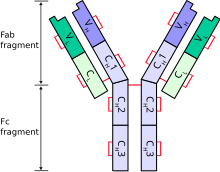HD 211415
HD 211415| 관측 데이터 에폭 J2000 이쿼녹스 J2000 | |
|---|---|
| 별자리 | 그루스 |
| 우측 상승 | 22h 18m 15.61403s[1] |
| 탈위임 | –53° 37′ 37.4640″[1] |
| 겉보기 크기 (V) | 5.33[2]/9.9[3] |
| 특성. | |
| 스펙트럼형 | G0V[4] + MV |
| U-B색지수 | +0.06[2] |
| B-V색지수 | +0.61[2] |
| 아스트로메트리 | |
| 방사 속도 (Rv) | -12.68±0.17km[5]/s |
| 고유 운동 (μ) | RA: +438.75[1]mas/yr Dec.: –632.46마스[1]/yr |
| 시차 (π) | 72.54 ± 0.36[1] 마스 |
| 거리 | 45.0 ± 0.2 ly (13.79 ± 0.07 pc) |
| 절대치수 (MV) | 4.69[6] |
| 세부 사항 | |
| HD 211415 A | |
| 미사 | 0.941±0.016[7] M☉ |
| 표면 중력 (log g) | 4.42±0.03[7] cgs |
| 온도 | 5,864±18[7] K |
| 금속성 [Fe/H] | −0.21±0.01[7] 덱스를 만들다 |
| 회전 속도 (v sin i) | 0.32km[8]/s |
| 나이 | 2.6–4.1[9] Gyr |
| HD 211415 B | |
| 미사 | 0.59[10] M☉ |
| 기타 지정 | |
| 데이터베이스 참조 | |
| 심바드 | 자료 |
HD 211415는 그루스자리에 있는 이중 별이다. 겉으로 보이는 시각적 크기가 5.33으로 육안으로 볼 수 있다.[2] 연간 시차 이동은 72.54 mas로 거리 추정치는 45광년이다. 비교적 적절한 동작이 높아 연간 93.4 mas의 속도로 천체를 횡단하고 있으며,[12] 방사상 속도 -13 km/s로 태양 가까이 이동하고 있다.[5]
1994년 현재 이 계통의 두 구성원은 34.935°[3]의 위치 각도를 따라 2.884°의 각이 분리되어 있다. 이들의 예상 분리는 39.8AU이다.[12] 이 쌍은 거의 에지온으로, 약 100AU의 반조르 축으로 관측되고 있을 가능성이 크다.[13]
HD 211415는 2003년 9월 투싼 아리조나 대학의 우주생물학자 마거릿 턴불에 의해 HabCat의 별 리스트를 분석한 결과 생명체를 유치할 수 있는 가장 유망한 인근 후보 중 한 명으로 확인되었다.[14] G0 V의 별 분류를 가진 G형 주계열성이다.[4]
참조
- ^ a b c d e van Leeuwen, F. (November 2007), "Validation of the new Hipparcos reduction", Astronomy and Astrophysics, 474 (2): 653–664, arXiv:0708.1752, Bibcode:2007A&A...474..653V, doi:10.1051/0004-6361:20078357, S2CID 18759600.
- ^ a b c d Mermilliod, J.-C. (1986), "Compilation of Eggen's UBV data, transformed to UBV (unpublished)", Catalogue of Eggen's UBV Data, SIMBAD, Bibcode:1986EgUBV........0M.
- ^ a b Poveda, A.; et al. (April 1994), "Statistical studies of visual double and multiple stars. II. A catalogue of nearby wide binary and multiple systems", Revista Mexicana de Astronomía y Astrofísica, 28 (1): 43–89, Bibcode:1994RMxAA..28...43P. 80-81페이지를 참조하십시오.
- ^ a b Gray, R. O.; et al. (2006). "Contributions to the Nearby Stars (NStars) Project: spectroscopy of stars earlier than M0 within 40 pc-The Southern Sample". The Astronomical Journal. 132 (1): 161–70. arXiv:astro-ph/0603770. Bibcode:2006AJ....132..161G. doi:10.1086/504637. S2CID 119476992.
- ^ a b Maldonado, J.; et al. (October 2010), "A spectroscopy study of nearby late-type stars, possible members of stellar kinematic groups", Astronomy and Astrophysics, 521: A12, arXiv:1007.1132, Bibcode:2010A&A...521A..12M, doi:10.1051/0004-6361/201014948, S2CID 119209183
- ^ Holmberg, J.; et al. (July 2009), "The Geneva-Copenhagen survey of the solar neighbourhood. III. Improved distances, ages, and kinematics", Astronomy and Astrophysics, 501 (3): 941–947, arXiv:0811.3982, Bibcode:2009A&A...501..941H, doi:10.1051/0004-6361/200811191, S2CID 118577511.
- ^ a b c d Tsantaki, M.; et al. (July 2013), "Deriving precise parameters for cool solar-type stars. Optimizing the iron line list", Astronomy & Astrophysics, 555: A150, arXiv:1304.6639, Bibcode:2013A&A...555A.150T, doi:10.1051/0004-6361/201321103, S2CID 118388752.
- ^ Martínez-Arnáiz, R.; et al. (September 2010). "Chromospheric activity and rotation of FGK stars in the solar vicinity. An estimation of the radial velocity jitter" (PDF). Astronomy and Astrophysics. 520: A79. arXiv:1002.4391. Bibcode:2010A&A...520A..79M. doi:10.1051/0004-6361/200913725. S2CID 43455849.
- ^ Mamajek, Eric E.; Hillenbrand, Lynne A. (November 2008). "Improved Age Estimation for Solar-Type Dwarfs Using Activity-Rotation Diagnostics". The Astrophysical Journal. 687 (2): 1264–1293. arXiv:0807.1686. Bibcode:2008ApJ...687.1264M. doi:10.1086/591785. S2CID 27151456.
- ^ Tokovinin, Andrei (April 2014), "From Binaries to Multiples. II. Hierarchical Multiplicity of F and G Dwarfs", The Astronomical Journal, 147 (4): 14, arXiv:1401.6827, Bibcode:2014AJ....147...87T, doi:10.1088/0004-6256/147/4/87, S2CID 56066740, 87.
- ^ "HD 45088 -- Variable of BY Dra type", SIMBAD Astronomical Database, Centre de Données astronomiques de Strasbourg, retrieved 2015-04-17.
- ^ a b Tokovinin, A.; Kiyaeva, O. (2015), "Eccentricity distribution of wide binaries", Monthly Notices of the Royal Astronomical Society, 456 (2): 2070, arXiv:1512.00278, Bibcode:2016MNRAS.456.2070T, doi:10.1093/mnras/stv2825, S2CID 1615080.
- ^ Krist, John E.; et al. (October 2010), "HST and Spitzer Observations of the HD 207129 Debris Ring", The Astronomical Journal, 140 (4): 1051−1061, arXiv:1008.2793, Bibcode:2010AJ....140.1051K, doi:10.1088/0004-6256/140/4/1051, S2CID 43979052.
- ^ "Astronomer Announces Shortlist Of Stellar Candidates For Habitable Worlds". Science Daily. 2006-02-21. Retrieved 2006-05-24.
외부 링크
- 스펙트럼 HD 211415
- "HD 211415 -- High proper-motion Star". SIMBAD: Centre de Données astronomiques de Strasbourg. Retrieved 2006-06-08.
- "HR 8501 / HD 211415 AB". SolStation. Retrieved 2006-06-08.
- "4C01821". ARICNS. Retrieved 2006-06-08.
- "Gliese 853 (HD 211415, HIP 110109)". The Encyclopedia of Astrobiology. Retrieved 2006-06-08.


